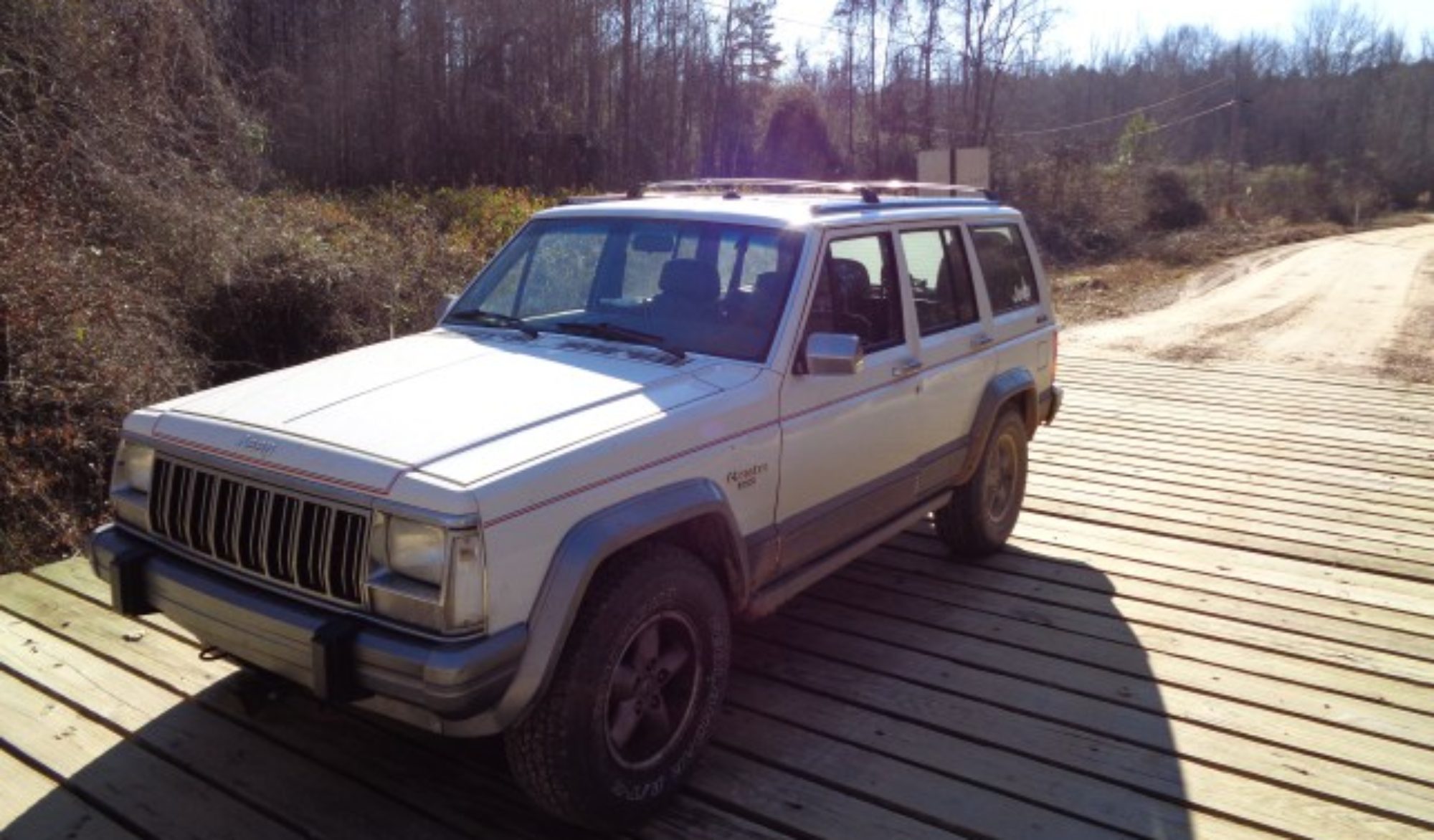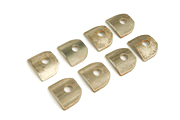Heater Treater Blend Door Repair
1999 Jeep Cherokee XJ
Janice’s Jeep Chreokee has had trouble regulating the temperature in the cabin. Eventually the warm / cool knob made no difference at all. It was cold all the time.
I remembered the previous experience of pulling the HVAC box to replace the heater core. That was a job I do not care to repeat. I also remembered that I had a lot of trouble getting the blend door to sit properly in its hinges when I reassembled the box.
I first checked the actuator and saw it moved in response to the knob on the dash. I had had trouble with my GMC Suburban that turned out to be the HVAC controller. Since the actuator was moving but the temperature was not changing, I knew something had to be wrong with the blend door.
A quick Google search showed this to be a common problem on the 97 to 01 Jeep Cherokees. The door is plastic and will break. Once I got mine out, I found it was indeed broken where the drive actuator engages it.
While searching for solutions, I found HeaterTreater.com. They offer a metal replacement blend door along with a procedure that allows the door to be replaced from the foot well without removing the box. At first, I thought the $119 price was high but it sounded better than removing the box again. Especially since the Freon has to be removed to pull the box.
I put the kit on my Paypal account and waited. It was shipped the same day I ordered but it did not arrive until the following Monday. So much for Priority Mail.
I borrowed my Dad’s Dremel kit as recommend in the instructions. The kit came with a cutting blade that looked like a drill bit. Dad’s kit had one similar but shorter so I used his instead.
I removed the passenger seat to get access. I was surprised that it is held in my SAE fasteners rather than metric. Janice had previously removed the actuator. That was the most time consuming part of the job. The actuator is held in place by three screws with 8mm heads. (Not two Phillips screws as stated in the instructions.) Two are almost impossible to access. I used a short socket on a ¼ inch drive ratchet. Even with that I had to pull the carpet back to get enough room.
I cut out the template from the instructions. It is a nice pattern and well thought out. I would not make the hole any different after seeing inside. At first, I could not find a way to transfer the pattern onto the black box to make the cut. It was very difficult to see in the dark floor board and then was little room to get a light in there with me.
My final solution was to transfer the pattern onto a piece of the provided silver tape. They sent plenty. I then stuck the tape to the box and used that as a guide to cut along.
I had not used the Dremel before or used a drill bit as a cutting tool. It was very messy and I would advise goggles or a face shield. Regular safety glasses don’t provide enough protection as the plastic chips fly everywhere and there is not much space between your face and the cutting. After some experimenting, I found it best to make several shallow cuts rather than trying to plunge in and make the cut all at once.
I made a pretty messy cut but was able to get the section cut out properly. As they note in the instructions, it does not have to be neat as it will be covered by tape when you are done anyway.
With the section removed, I could see my blend door hanging at an odd angle. It was not seated in the upper pivot point. At this point I considered putting it back in place and returning the Heater Treater Door. However, upon closer inspection I saw where it was broken. I was able to get it out without making the additional cut noted in the instructions. I guess I was lucky as they said.
Next I took a close look at the replacement door and compared it to the original. There are some minor differences in the shape. The major difference is in the material of construction however. The original is flimsy plastic and the replacement is metal covered in foam. The replacement also has a removable axle to allow it to be inserted and removed without separating the box halves. All the stressed parts are made of steel or aluminum. It looked very strong.
Putting the door in place took me several tries. The top has to fit in the pivot point at the top of the box. The instructions describe the procedure but it took me several attempts before it popped into place. Then it promptly fell out and I had to do it all over again.
The most difficult part of the whole procedure was then putting the little nylon washer in place. I had a very difficult time finding a way to position my hands to get the washer placed under the shaft and over the hole without letting the door slip out of the upper pivot. I am not sure how I eventually did it, but I finally got it all in place.
The axle shaft will fit in two ways only one of which is correct. I hooked up the actuator to the wire again and rotated it to the centering mark on the actuator by turning the hot cold knob on the dash. I removed the wire again and slipped the axle shaft into the actuator. I then carefully raised the actuator and shaft into the hole and wiggled the door to let it slide down on the axle.
I then rotated the actuator to align the screw holes and put in the one screw that is easy to get to. I reattached the wire and tested the actuator. The door moved nicely from one end to the other.
I then sealed up the hole. I tore two pieces of tape and placed them on the bottom of the cut out piece. I then pressed the cut out into the hole and pressed down the tape on either side. It does not look perfect, but you can’t see it unless you lay in the floor anyway.
I then let Janice put back the other two screws holding the actuator. I then reinstalled the seat. She will now have heat for holiday traveling. She now just has to clean up all the black plastic shavings. I even had them in my ears.
Overall, I found the Heater Treater well worth the price. The instructions were very clear and easy to follow. The template was just the right shape to make the repair. Cutting the box sure beats removing the box. See www.HeaterTreater.com for more info. Allow about two hours to make the repair.

